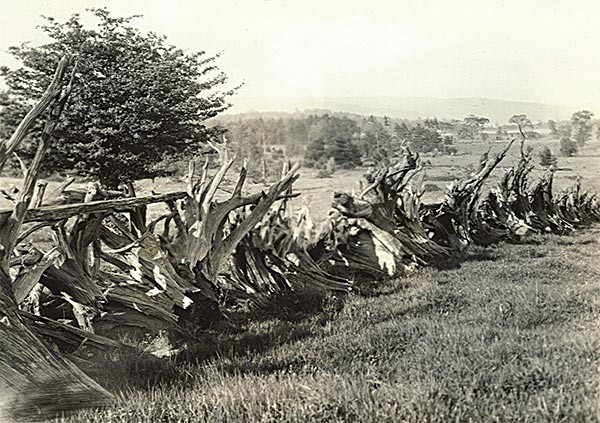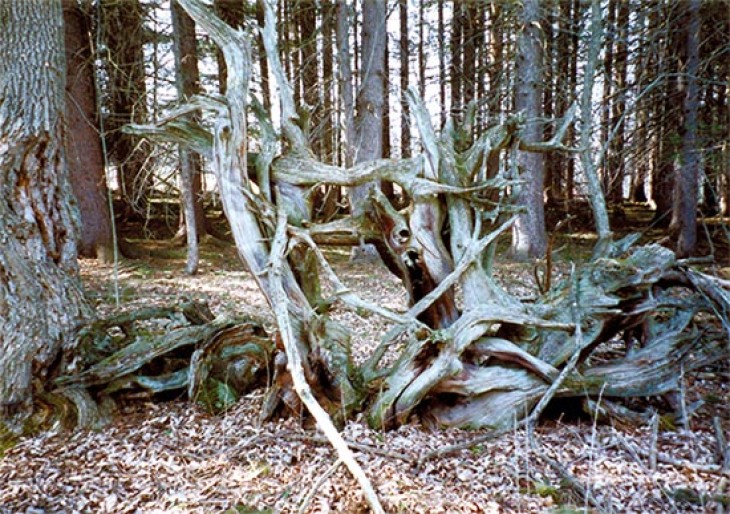They’ve been compared to oversize antlers, bones, or fantastic teeth. If you’ve ever seen the remains of a stump fence, you probably have your own description. The stump fence is an unlikely mix of bulky form and delicate, almost lacy design – whorls and striations that once hid underground now put on display for all the world to see. Thoreau admired root fences, mentioning them more than once in his journal. “No line of fence could be too long for me to study each individual stump,” he said.
Clearing forestland for agriculture means displacing massive stumps. Centuries ago, it wasn’t easy. There was no excavator to rip a stump from the ground and shove it out of the way. Instead, men used a giant tripod rigged with a screw; the machine, skidded in place over each stump, required four men and as many horses to operate. With this method, 15 stumps could be extracted in a day. Other inventions incorporated windlasses and levers or plain-old fire. Later, dangerously, dynamite was employed.
Ingenuity didn’t stop there. Where to put the exhumed stumps? The extricated roots were often laid close along property lines, forming a rudimentary fence. The twined roots served as boundary, corral, and windbreak. The result, though functional, was, according to some, aesthetically lacking. The fences of freshly upturned roots became a byword for the unfortunate in appearance, said to be “homely as a stump fence.”
Others had a more favorable view of this unique rural architecture. In 1869, travel writer J. T. Trowbridge noted, “a picturesque feature of the country which has not been often enough described [is] the root-fence. I am not aware that justice has ever been done to these by pen or pencil. What astonishing stereoscopic views they would make!”
I feel the same way, 140 years later, when I lift my point-and-shoot camera and try to record at least a semblance of the color and shapes and fantastic grain of a stump fence near my home in western New York state. The shapes of the stumps are the fantastic thing, until I realize I’m also looking at a slice of history. For three generations or more, this row of upended trees has guarded the fields, now dotted with good-sized hardwoods. I try to imagine the trees that grew here, giant makers of shade and oxygen. I hope some of the fine, old houses in the village have timbers and polished floors made from these trees.
Swathed in lichens, the roots shrink imperceptibly, each winter’s ice forcing deeper clefts in the crooks and burls. The fence is no longer a barrier; a deer or rabbit has hardly to alter its course to get through. It’s tempting to drag one of the old stumps out of the woods and into the front yard for display. Like an old wagon wheel, it reminds us of the past and makes a handsome backdrop for the marigolds. But like a patch of trillium or an old stone wall, the fence charms us most – and tells its story more convincingly – when it’s at home in the woods.



